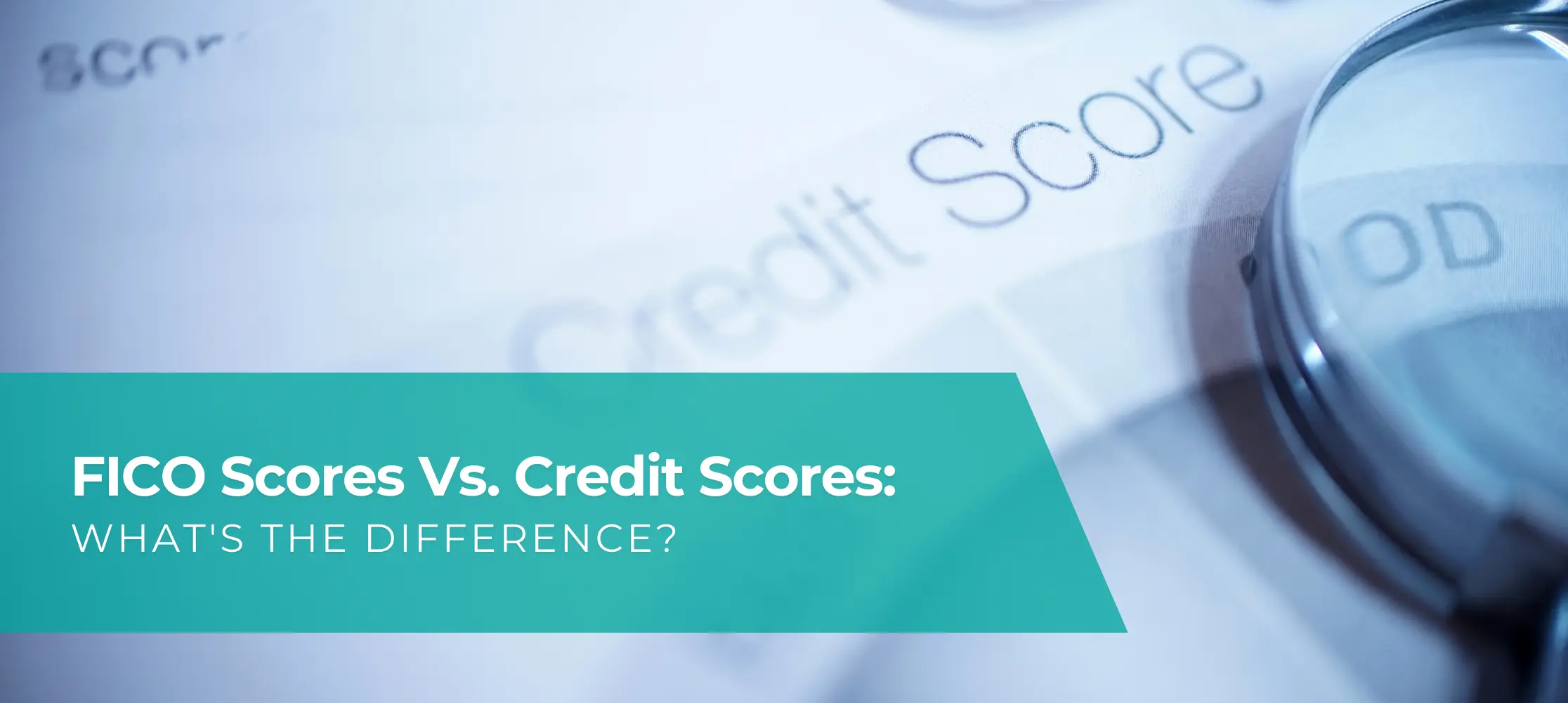FICO Scores Vs. Credit Scores – What’s The Difference?

A credit score is a three-digit measure of how well you are managing your finances. The FICO score is one of many different types of credit scores lenders might use to evaluate a borrower’s risk. Being aware of the difference between them both can help you improve your credit score. This will lead to you getting approvals for loans easily at even lower rates.
Your credit score is generated by using a bunch of different scoring models. FICO is one of the most common models that lenders use, along with vantage credit score. Mostly, people use the terms “credit score” and “FICO score” interchangeably. However, they do not know that both of these terms technically mean different. The FICO scoring system, as well as VantageScore, is merely a formula that lenders use to create one of your many credit scores. Here is what you need to know about the difference between your credit score and your FICO score and why they matter. Starting with…
Fico Score Vs Credit Score | All About Them
What Is A Credit Score?
A lender uses your credit score to determine whether you are a responsible borrower or not. Generally, the higher your score is, the more chances you have to get an easy approval for a credit product. It also helps to ensure that you get the most favorable terms, which typically means better interest rates. This leads to larger loan amounts or lower payments.
What Is A FICO Score?
Fair Isaac Corporation (FICO) is one of the first companies to develop a credit scoring model based on the information gathered from credit score monitoring services. This scoring system uses a particular set of criteria to generate your score, narrowing in on information found in your reports. The FICO scoring system is one of the most popular scoring models, next to the Vantage Score 3.0.
FICO Score Ranges
Category |
Score |
| Excellent | 800-850 |
| Very good | 740-799 |
| Good | 670-739 |
| Fair | 580-669 |
| Poor | 300-579 |
What Is Vantage Score?
The three major credit reporting agencies, Equifax, Experian, and TransUnion, formulated VantageScore in 2006. They created it as an individually managed joint venture, and since then, the company has released five scoring models. If you are wondering, “If my vantage score is 700 what is my FICO score?” then take a look at the table below to understand the difference between both of these credit scoring models.
Vantage Score Ranges
Category |
Score |
| Super Prime | 781-850 |
| Prime | 661-780 |
| Near Prime | 601-660 |
| Subprime/ Not Prime | 300-600 |
How Are FICO Scores Calculated?
Now that we know the basic differences between FICO VS credit score, let us see how the former ones are calculated. FICO scores are broken down into five different criteria, every one of them contributing a different percentage to your overall score:
Credit Mix (10%)
The diversification of your credit portfolio also affects my credit score. It is better to have a variety of products like auto loans, mortgages, credit cards, and student loans.
New Credit (10%)
The number of new credit accounts on your reports will have an impact on your FICO score. A lot of new inquiries or new accounts in a short period of time might also be a negative thing for lenders.
Length Of Credit History (15%)
How long you have held your credit accounts also impacts your score. FICO peaks at your oldest and newest accounts, as well as the average age of your total credit accounts. If you wish to track your scores yourself, then we suggest you sign up at Gifted Financial Services. It is one of the best credit score services out there and can help you view your scores from all three major credit bureaus. Not only this, but these experts also help you dispute any errors in your reports.
Amounts Owed (30%)
Amounts owed account for the actual amount of debt that you have to pay across your various accounts, as well as your debt-to-credit ratio. A debt-to-credit ratio, also known as your credit utilization ratio, represents how much of your total revolving credit you are using at a time. Experts suggest using less than 30 percent of your total revolving credit to keep your score high.
Payment History (35%)
Paying your bills on time is weighted to be the heaviest while calculating your scores. This means it is very crucial never to miss your payment.
What Does A Credit Score Mean To A Lender?
Your credit score is how lenders evaluate your creditworthiness. Your credit score influences the chances of you getting approval for credit products and the kinds of terms you are assigned. Based on the exact scoring system your lender uses, vantage score or FICO, and which bureau it pulls from, the score your lender sees might vary depending on the situation.
How Can A FICO Score Improve?
Some of the easiest ways include keeping credit card balances low, paying your bills on time, using different types of credit, keeping old accounts open, and limiting how frequently you apply for new lines of credit or credit.
The Bottom Line
A lot of people use “credit score” and “FICO score” synonymously, but it is something that they do wrong. A FICO score is only a scoring model that is used to generate your credit score. There are several other scoring models, but FICO is the most commonly used model by lenders. It uses the information from your credit reports to generate your score according to five different criteria. One of the proven ways to improve your bad credit score is to make all of your payments on time.



